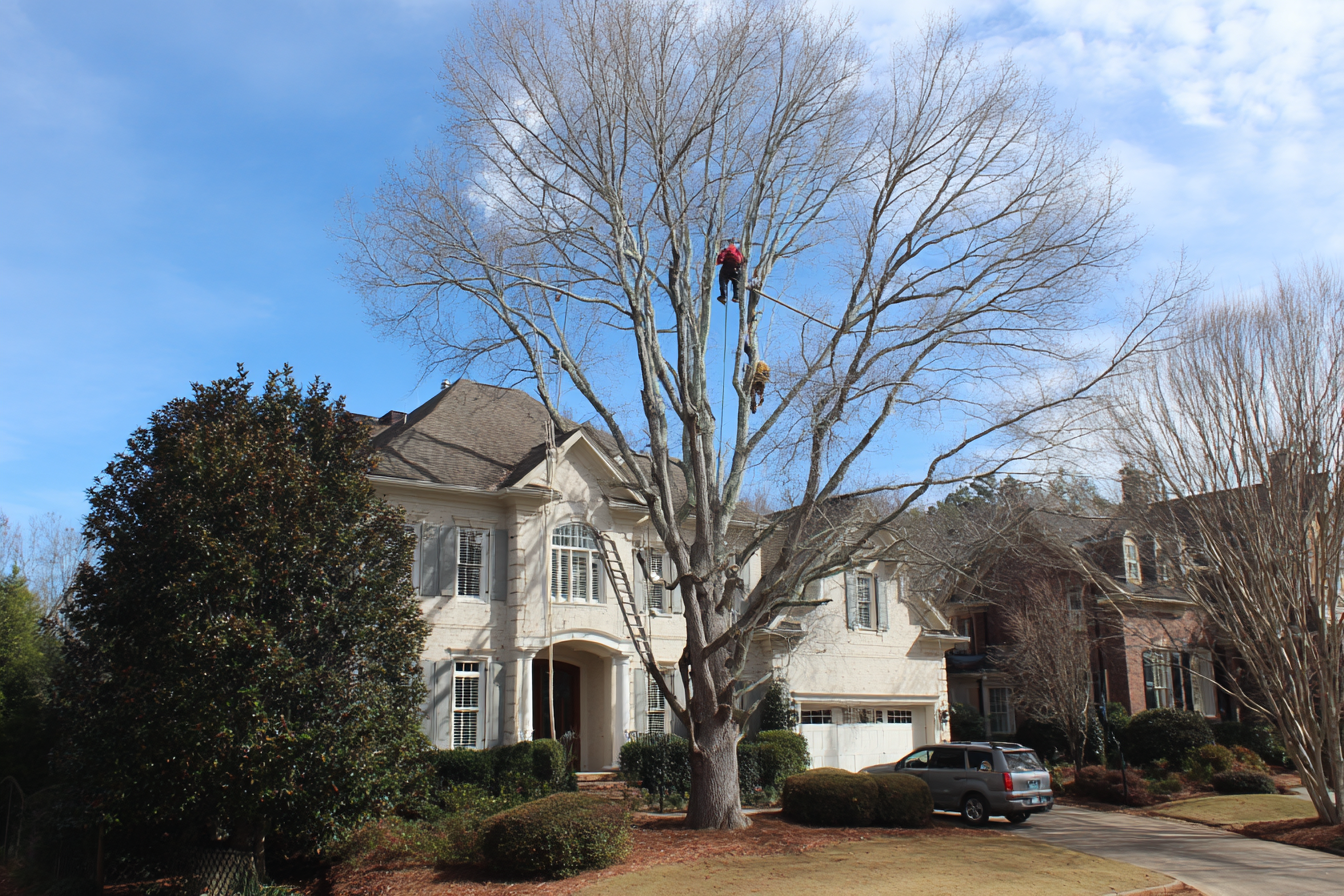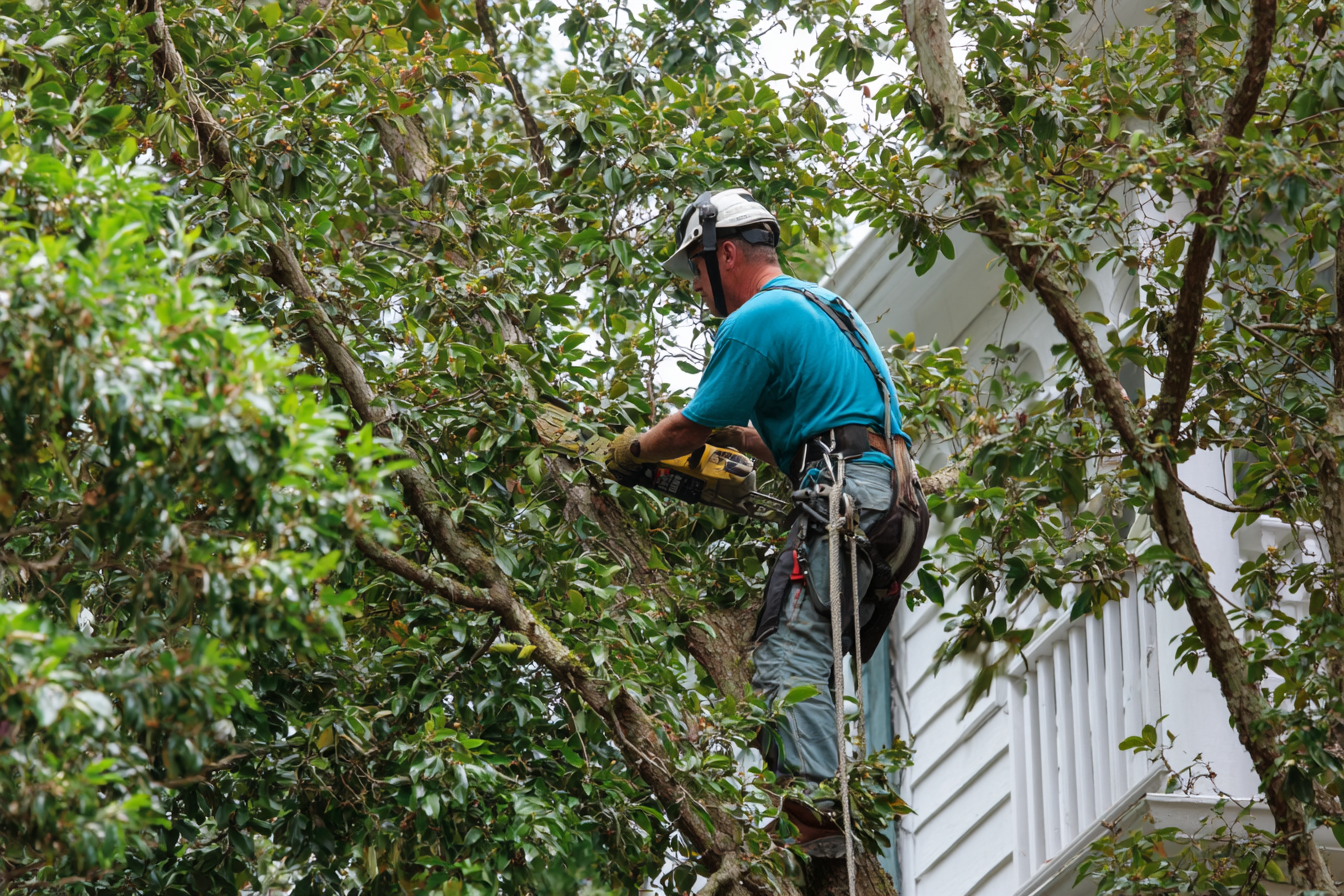
Imagine a bustling, interconnected city where every resident knows their role. The architects, the builders, the food suppliers, they all work together in perfect harmony. Now, picture that city as Georgia’s natural landscape. Every tree, every bird, every insect plays a crucial part. When you introduce a "resident" that doesn’t speak the local language or contribute to the community, the whole system can fall out of sync. This is exactly what happens when we choose non-native trees for our landscapes.
The simple act of planting a tree has a ripple effect that extends far beyond your property line. While many non-native trees might look beautiful, they often lack the ecological relationships that have been built over millennia. Choosing a native tree isn’t just a landscaping decision; it’s an investment in the health of your yard, your community, and the entire Georgia ecosystem.
What Makes a Tree "Native" to Georgia?
A native tree is a species that has grown and reproduced naturally in Georgia for centuries, long before European settlement. These trees have had ample time to adapt to the state's unique climate, from the red clay of the Piedmont to the sandy soils of the coastal plains. They have evolved to handle Georgia's hot summers, periods of drought, and specific regional pests and diseases. This natural resilience is the key to their value.
Non-native, or exotic, trees are species that originated in other parts of the world. While some are harmless, many can become invasive, outcompeting native plants and disrupting the delicate balance of the ecosystem. Think of it this way: a native oak tree has a deep history with the local environment, whereas a non-native species is a stranger in a new land, without the necessary connections to thrive without constant human intervention.

The Ecological Benefits Are Undeniable
The ecological importance of native trees is profound. They are not simply a backdrop for our lives; they are the very foundation of a healthy, functioning ecosystem. Planting them is a powerful way to make a positive impact, even on a small scale.
1. A Thriving Habitat for Wildlife
Native trees are the lifeblood of Georgia's wildlife. Over thousands of years, local birds, bees, and other animals have co-evolved with these specific plants. These trees provide essential food sources like acorns, nuts, and berries that are perfectly timed to the life cycles of local fauna. More importantly, they support a massive number of insects, particularly caterpillars.
Entomologist Doug Tallamy's groundbreaking research highlights this connection perfectly. He found that a native oak tree can host over 500 species of caterpillars, which are a critical food source for nesting birds. In stark contrast, a common non-native tree like a crape myrtle hosts a tiny fraction of that number. A single clutch of chickadee hatchlings requires thousands of caterpillars to survive. Without native trees, bird populations simply cannot thrive.
2. Natural Pest and Disease Resistance
Because native trees have adapted to local conditions, they possess a built-in resistance to many of the pests and diseases that are common in Georgia. This means they are far less likely to suffer from major infestations or illnesses that could require extensive, and often expensive, chemical treatments. When a native tree does face a pest, it's often part of a natural predator-prey relationship within the ecosystem, which helps keep populations in check.
Non-native trees, on the other hand, are like foreigners with no immunity. They are vulnerable to a wide range of local pests they have no defense against, making them a higher-maintenance choice for any property owner.
3. Water Conservation and Soil Health
Georgia's native trees have developed deep, intricate root systems that are perfectly suited to the state's soil. These root systems are a powerful tool for environmental health. They help with water infiltration, allowing rainwater to soak into the ground instead of running off and causing erosion. This not only conserves water but also helps to filter pollutants, keeping our waterways cleaner.
Their ability to withstand periods of drought once established is another huge advantage. Unlike many non-native species that may require frequent watering during dry spells, native trees are self-sufficient. This saves you time, money, and one of our most precious resources: water.
4. Low Maintenance, High Reward
Who doesn’t want a beautiful landscape that requires less work? Native trees, by their very nature, are a low-maintenance choice. They don't need synthetic fertilizers, excessive watering, or frequent pesticide applications to survive. They are designed to thrive on what the Georgia environment naturally provides. This means you can spend less time and money on upkeep and more time enjoying the natural beauty of your property.
Iconic Native Trees for Georgia Landscapes
Georgia is blessed with a stunning variety of native trees, each with its own unique characteristics. Choosing the right one for your landscape depends on your specific location within the state, but here are a few magnificent examples that support our local ecosystem.
- White Oak (Quercus alba): A majestic shade tree that is a powerhouse for wildlife. Its acorns are a crucial food source for everything from squirrels to deer, and its leaves host hundreds of insect species. It's the ultimate ecological anchor for any large property.
- Bald Cypress (Taxodium distichum): An iconic, swamp-loving tree often found in the southern parts of the state. It's a deciduous conifer, meaning it drops its needles in the fall, offering beautiful seasonal color. The "knees" that rise from its roots are a unique characteristic, and it's a vital species for flood and drought tolerance.
- Sweet Gum (Liquidambar styraciflua): A beautiful deciduous tree known for its star-shaped leaves and vibrant fall colors of yellow, orange, and purple. Its spiky seed pods provide food for some birds and animals, and its tough nature makes it a great choice for many landscapes.
- Eastern Redbud (Cercis canadensis): A smaller, ornamental tree that provides a spectacular show of pinkish-purple flowers in early spring, a vital source of nectar for early-season pollinators. Its heart-shaped leaves add a touch of elegance to any yard.
- American Beech (Fagus grandifolia): Instantly recognizable by its smooth, gray bark. This tree provides valuable nuts for wildlife and its golden fall foliage often persists through the winter, adding year-round interest to the landscape.

The Georgia Pro Tree Services Approach
At Georgia Pro Tree Services, we are more than just arborists; we are stewards of the Georgia ecosystem. Our commitment goes beyond simply planting or removing trees. We believe in providing expert guidance to help our clients make informed, environmentally responsible choices. We understand the critical role that native trees play in our state's health, and we are passionate about helping you create a landscape that is both beautiful and ecologically sound.
Our professional services are designed to support a thriving, native ecosystem. We can help you with:
- Arboriculture consultations to assess your property and recommend the best native trees for your specific soil and climate.
- Professional tree planting to ensure your new native trees are established correctly for long-term health and success.
- Pruning and maintenance to keep your native trees healthy and strong, allowing them to provide maximum benefit to the ecosystem.
- Safe and efficient removal of non-native or hazardous trees to make way for native species and improve the overall health of your landscape.
Choosing native trees is one of the most impactful things you can do for your property and your community. By working with Georgia Pro Tree Services, you can be confident that you are making a choice that will beautify your home, reduce your maintenance needs, and contribute to a healthier Georgia for generations to come.
Conclusion: A Legacy of Green
The trees you plant today will be a living legacy for tomorrow. By choosing native trees, you are not just adding greenery; you are rebuilding habitats, supporting local biodiversity, and creating a more resilient, low-maintenance landscape. You are taking a proactive step toward restoring the natural harmony of Georgia’s ecosystem, ensuring that the birds, butterflies, and other wildlife that make our state so special will continue to thrive.
Don't let your landscape become a silent part of a disconnected ecosystem. Let it become a vibrant, living testament to the power of native plants.
Ready to transform your yard into a thriving Georgia ecosystem?
Contact Georgia Pro Tree Services today for a professional consultation and discover how we can help you choose and care for the perfect native trees for your property.
Common FAQs About Georgia Native Trees
What is the difference between a native and a non-native tree?
A native tree is a species that has naturally evolved and grown in Georgia for thousands of years, adapting to the local climate, soil, and wildlife. A non-native, or exotic, tree originated in another part of the world. While some non-native trees are not harmful, they often do not provide the same ecological benefits and can sometimes become invasive.
Why are native trees better for wildlife?
Native trees have a co-evolutionary relationship with local wildlife. They provide specific food sources (e.g., caterpillars, nuts, berries) and habitats that local animals, birds, and insects have depended on for their survival for centuries. Non-native trees often lack these connections, leading to a disruption in the food web.
Do native trees require less maintenance?
Yes, once established, native trees generally require less maintenance than non-native species. Because they are adapted to the local environment, they are more resilient to drought, pests, and diseases, reducing the need for extensive watering, fertilizers, and pesticides.
How do I know which native trees are right for my yard?
The best native trees for your property depend on factors like your specific location in Georgia, soil type, and sunlight exposure. A professional arborist can provide a consultation to assess your landscape and recommend the best native species that will thrive in your unique conditions while meeting your landscaping goals.
Can Georgia Pro Tree Services help me plant native trees?
Yes, Georgia Pro Tree Services offers a full range of services to support your landscaping needs. We provide expert consultations, professional tree planting to ensure proper establishment, and ongoing maintenance to keep your native trees healthy for years to come.

We're your local tree pros!
Georgia Pro Tree Services takes the highest quality of care when servicing your trees. Call us to find out how we can help you keep your yard in top shape.



